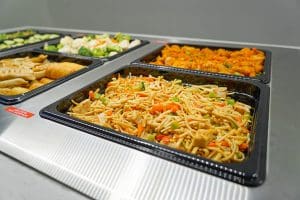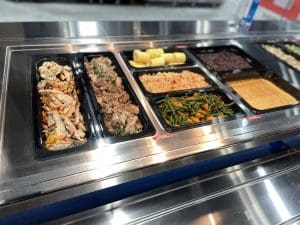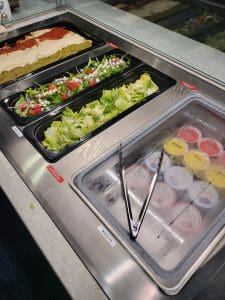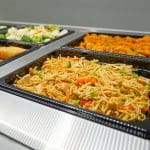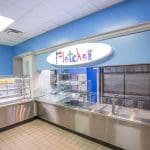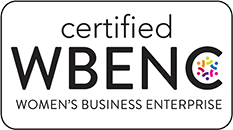Food wells are an essential part of any commercial foodservice business. They perform key roles…
Right or Wrong: Are You Making These Top Five Mistakes When Serving Food?
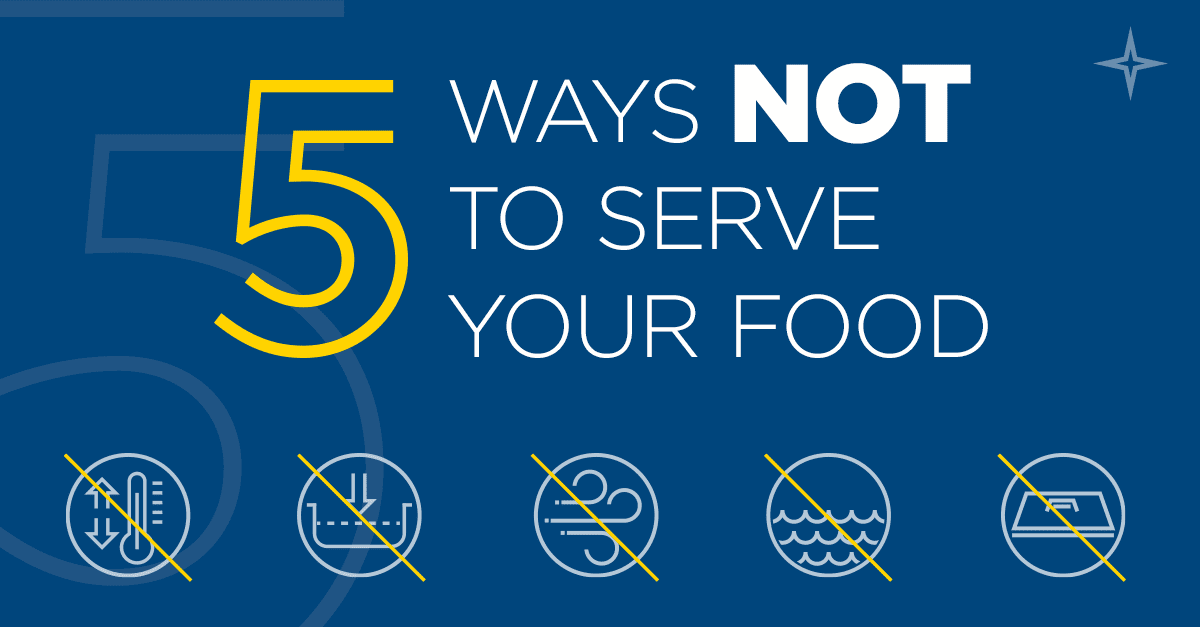
There are more than 130,000 public and private schools across the U.S., and they all have one undeniable thing in common: hungry students. Many foodservice operations are intently focused on what is being served, while how it’s served sometimes remains a bit in question.
Serving up nutritional and popular meal choices is only one part of the equation. There are a variety of common mistakes made by foodservice operators that can impede a successful outcome — and doing things “the wrong way” can lead to limited offerings, reduced efficiencies, long lines or even decreased participation rates.
Our LTI experts have seen the good, the bad and the ugly, and have weighed in on the top ten ways foodservice operators make mistakes in serving lines across the nation.
Wrong Way #1: Not heating or chilling foods to temperature before placing in the wells
Food wells are meticulously designed to preserve the temperature of food, rather than alter it. It is crucial for operators to avoid the mistake of placing food in wells that have not yet reached the desired serving temperatures, for several reasons:
- Food safety: With hot food products, preheating helps ensure the food is kept at a safe temperature and reduces the risk of foodborne illness. Placing cold food in hot wells can create unstable serving temperatures and lukewarm menu items. Additionally, cold food added to warm wells can produce condensation, making the food soggy or watery.
With cold food products, items must be kept at 40 degrees or below prior to placing in the wells to ensure the product remains at or below required temperatures for food safety.
- Food quality: Whether using hot or cold wells, holding foods at the optimum temperature within is essential to maintain the quality and freshness of your offerings. Food in hot wells should never reach a ‘cooking state’ and cold food should never reach a ‘freezing state.’
Right Way: Always take the time to pre-heat or pre-chill your food offerings. Not doing so can lead to problems you likely can’t afford.
Wrong Way #2: Using cold wells that require recessing food pans:
When designing a serving line, using cold wells that require recessing your food pans can be a mistake for several reasons, including:
- Decreased sales. Recessed cold wells require food to be displayed 2-3 inches below the pan top, which means your menu items may not be visible to customers. Reduced visual appeal leads to missed opportunities and decreased sales.
- Poor access. Recessed pans make it difficult to access food offerings, whether it is a self-serve situation or a staff member attempting to plate food for a customer. This issue is compounded when the use of sneeze guards is required. Younger students or those with a physical disability may need assistance reaching items — which ultimately leads to increased labor costs as well as slowing down the line.
Right Way: Utilize LTI’s Tempest Air cold wells because it allows food pans to be placed flush to the counter. Tempest Air is available in a sloped configuration toward the customer, making access even easier.
Wrong Way #3: Using forced air cold wells.
Utilizing forced air cold wells that blow air over the food is another mistake that is commonly made when designing or specifying serving line equipment. The difficulties stemming from forced air include:
- When air is forced over food wells, menu offerings dry out and quickly become unappealing.
- Forced air, when pumped through ductwork and passed over the product, can potentially elevate the presence of contaminants commonly found in ambient room air. To maintain safety standards, the associated ductwork necessitates nightly cleaning, leading to substantial labor expenses.
Right Way: Utilize LTI’s Tempest Air cold wells because they are designed to circulate super-cooled air under the pans — not across the food.
Wrong Way #4: Using hot wells that require water
Using water to heat food wells in a serving line can be a mistake for several reasons:
- Inefficiency: Calrod heating elements in traditional wells waste a lot of energy because they are fastened with a bracket to the outside of the hot well but are not touching the surface. This inefficiency requires extra energy to heat the water, raising utility costs and creating a less environmentally friendly operation.
- Extra maintenance/labor: Water must be changed frequently to prevent bacteria growth, and wells need to be cleaned regularly to prevent the buildup of scale and mineral deposits. As staffing is a major issue facing many foodservice operations, any additional labor can come with a big price tag.
- Higher replacement costs: Using hot water in direct contact with wells can cause the stainless steel to become pitted due to chloramines in the water. Chloramines are very corrosive to stainless steel, especially when the water is heated.
- Need for a drainage system: The use of water in hot wells requires a place for the water to go. If you do not have a drainage system in place or if it is located in a different area of the cafeteria, the cost of installing new drains comes with a hefty price tag.
Right Way: Utilize LTI’s ThermaWell hot food wells, which offer the choice of silicone blanket technology that is in contact with the well and does not require water. Using the waterless model, the need for drains is avoided entirely, allowing air to flow efficiently beneath the pans. Thermawells conserve electricity over time, as more hot wells can run on a single circuit breaker.
Wrong Way #5: Not covering food wells while pre-heating or pre-chilling
Would you leave your refrigerator door standing open after putting your groceries away to chill? Of course not! Would you leave your oven door open while trying to preheat your oven? Nope. Yet this is a common mistake made by foodservice professionals, whether using hot, cold or frozen wells.
There are many downsides to this oversight, including:
- Temperature instability: Uncovering hot food pans can cause uneven heat distribution, resulting in hot spots and cold spots, leading to overcooked food in some areas and undercooked food in others. By covering food wells, heat is evenly distributed to maintain consistent cooking.
- Decreased food quality: Uncovered food pans cause food to dry out and become less appetizing. Covering food pans helps retain moisture, preserving the food’s quality and taste.
Right way: Many foodservice operations use pans that are bent or damaged in some way that allows air to escape, so be sure to use pans that don’t have bent corners for a complete and efficient seal. Cover all your food wells, hot or cold, while in pre-heating/pre-cooling stages with domed or flat lids — no exceptions! It’s also best practice to cover your food between serving periods or peak times for optimum efficiency.
LTI Tip: When using fractional cold pans, utilize adapter bars to help seal up gaps!
Is it time to change the way you serve?
Which of these mistakes are you making in the way you serve food or specify foodservice equipment? What changes can you make to maximize efficiency, food safety and food quality? It is essential to invest in equipment and technology that can help minimize these common mistakes and maximize your efficiency and flexibility.
BUT there are more than these five oversights that can sabotage your efforts to serve consistent, quality menu items. Join our mailing list to receive Part II of this “right way |wrong way” series.
https://lowtempind.com/resources/blog/
